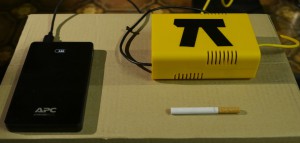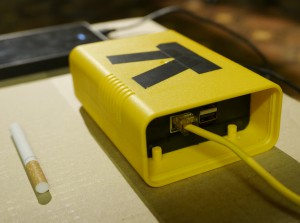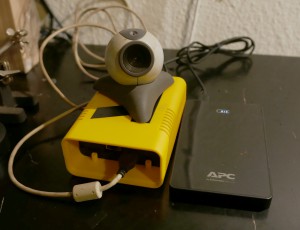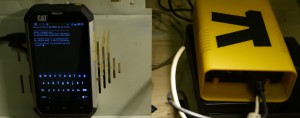Aus dem Banana Pi Pro Board und einem “Eurobox” Universal-Gehäuse Polystyrol (EPS), Conrad Artikel-Nr. 523130 – 62 habe ich eine kleine Appliance für mein Netzwerk konstruiert, die verschiedene Aufgaben übernehmen kann. Als Betriebssystem verwende ich Bananian, welches mir ein Debian Wheezy zur Verfügung stellt. Das System war sehr unkompliziert einzurichten und funktioniert super.
Die von mir ausgewählte Powerbank APC M10BK-EC kann leider kein “Passthrough Charging”, und das saugt! Dass APC diese Funktion nicht zur Verfügung stellt, spricht eine deutliche Sprache über APC. 😛
Im WLAN angemeldet und mit einer Webcam, die ich noch übrig hatte, ergibt sich folgende sehr simple Anwendung:
Ich schätze es sehr, dass ich den Krempel aus der mir geläufigen PC-Welt weiterverwenden kann. Das geht mit dieser Konfiguration gut, allerdings zieht die Kiste in oben abgebildeter Webcam-Konfiguration mit aktiviertem WLAN schon gut Strom und wird wohl nur ein paar Stunden durchhalten (Stamina-Test läuft).




